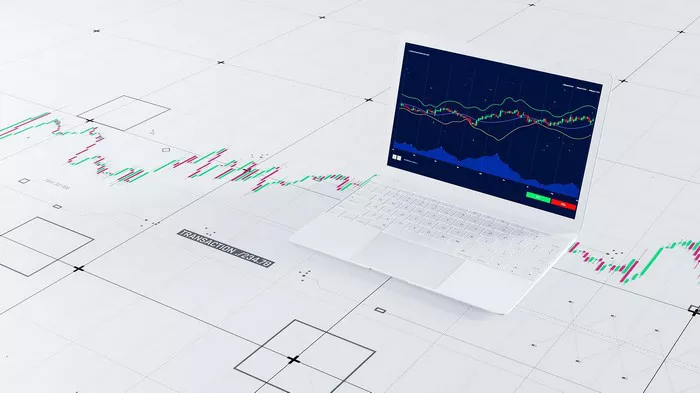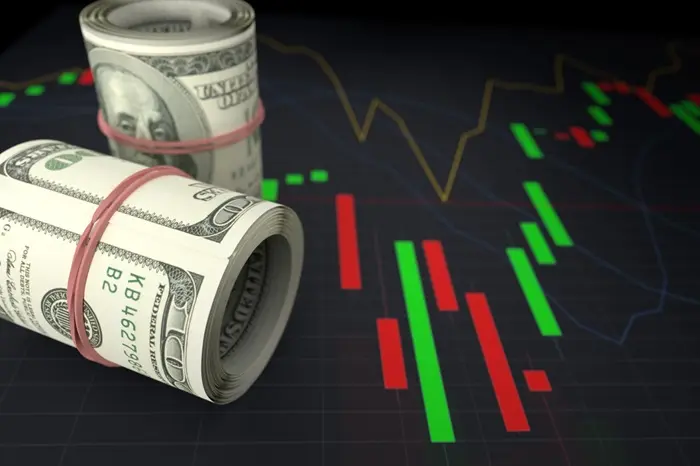The forex trading market is vast, dynamic and full of opportunities. As the world’s largest financial market, with a daily turnover of over $6 trillion, forex attracts traders from all walks of life. The appeal is clear: high profit potential, flexibility and the ability to trade around the clock. However, being a successful forex trader requires more than just an interest in the market – it requires knowledge, discipline and the right tools. In this guide, we’ll walk you through the basic steps needed to become a skilled forex trader.
What is forex trading?
Before you become a forex trader, it’s essential to understand the basics of forex trading. Forex trading involves buying and selling currencies. Unlike stocks, forex trading is usually done in currency pairs, such as the euro/dollar (EUR/USD) or the pound/yen (GBP/JPY). The goal is to profit from exchange rate fluctuations.
The forex market is open 24 hours a day, five days a week, offering traders around the world a flexible way to participate. With a daily turnover of over $6 trillion, the forex market’s liquidity and volatility are unmatched, making it very attractive to short-term traders.
Step 1: Learn the Basics of Forex Trading
Before you begin your Forex trading journey, it is important to understand how the market works. This includes:
Understanding Currency Pairs
In Forex trading, currencies are quoted in pairs. The first currency in the pair is the base currency and the second currency is the quote currency. For example, in the EUR/USD pair, the EUR is the base currency and the USD is the quote currency. When you buy EUR/USD, you are buying the EUR and selling the USD. If the exchange rate moves in your favor, you can sell the pair for a profit.
Learn the Mechanics of the Forex Market
It is essential to understand how the Forex market works. Forex trading is over-the-counter (OTC), which means it is not centralized on a single exchange. Instead, it occurs between two parties, usually through a broker, financial institution, or market maker.
Understanding the mechanics of the market—how the bid-ask spread is formed, the spread (the bid-ask spread), and how liquidity affects your trades—is essential to making informed decisions.
Step 2: Choose the Right Forex Broker
Selecting a reputable Forex broker is one of the most critical steps in your trading journey. A Forex broker acts as an intermediary between you and the market, providing access to currency pairs, leverage, and trading platforms.
Key Factors to Consider When Choosing a Broker
Regulation: Ensure that the broker is regulated by a reputable financial authority, such as the U.S. Commodity Futures Trading Commission (CFTC) or the UK Financial Conduct Authority (FCA). This adds a layer of security for your funds.
Trading Platform: Choose a broker that offers a user-friendly and reliable trading platform. Platforms like MetaTrader 4 (MT4) and MetaTrader 5 (MT5) are popular for their functionality and tools.
Fees and Spreads: Different brokers charge different fees, including spreads, commissions, and overnight fees. Compare these costs to ensure you are getting competitive rates.
Customer Support: Good customer service can be a lifesaver when you encounter technical issues or need assistance during trading hours.
Step 3: Set Up a Trading Account
Once you’ve selected a broker, the next step is to set up a trading account. Most brokers offer multiple types of accounts, such as demo accounts, standard accounts, or ECN accounts. A demo account is a great way to practice without risking real money.
What You Need to Get Started
Personal Information: You will be required to provide identification and financial details to verify your identity. This step is part of the Know Your Customer (KYC) regulations that ensure the safety of your funds.
Deposit Funds: After your account is verified, you will need to deposit funds to start trading. Many brokers offer various payment methods, including bank transfers, credit/debit cards, and e-wallets.
Leverage: Most brokers offer leverage, allowing you to control a larger position with a smaller amount of capital. While leverage increases potential profits, it also magnifies losses, so it must be used carefully.
Step 4: Develop a Trading Strategy
Trading without a strategy is akin to driving blindfolded. A well-thought-out trading strategy is essential for consistent success. This strategy should include:
Types of Trading Styles
Day Trading: Day traders open and close positions within the same trading day, capitalizing on short-term price movements. This style requires active monitoring of the market throughout the day.
Swing Trading: Swing traders hold positions for several days or weeks, aiming to profit from medium-term price movements. This strategy involves less frequent trades and can be ideal for those who cannot devote full-time hours to trading.
Position Trading: Position traders hold trades for months or even years, relying on long-term trends. This is a less active strategy and requires patience and deep market analysis.
Technical vs. Fundamental Analysis
Technical Analysis: This approach involves analyzing historical price movements and using indicators (such as moving averages, RSI, MACD) to predict future price action.
Fundamental Analysis: This approach focuses on economic and geopolitical events that may influence currency values. For example, interest rate changes, inflation data, and political events can impact currency markets.
A balanced approach, using both technical and fundamental analysis, is often recommended for Forex traders.
Step 5: Practice with a Demo Account
Before diving into live trading, it’s crucial to practice your strategy in a risk-free environment. A demo account allows you to trade with virtual funds, helping you become familiar with the broker’s platform and testing your strategies.
Advantages of a Demo Account
No Financial Risk: You can experiment with different strategies and techniques without the risk of losing real money.
Learn the Platform: A demo account helps you get comfortable with the broker’s trading platform, learning how to place orders, use indicators, and manage positions.
Build Confidence: Trading in a demo account builds confidence and prepares you for the challenges of live trading.
Step 6: Start with a Small Investment
When you are ready to transition from a demo account to live trading, start with a small investment. Start with the smallest investment you can afford to lose. This will allow you to gain experience without the pressure of risking large amounts.
Risk Management
Effective risk management is critical in forex trading. Most traders recommend investing only a small portion of your trading capital (1-2%) on any single trade. This can be achieved by using stop-loss orders, which automatically close your position when the market moves against you.
Set Realistic Expectations
Forex trading is not a “get rich quick” attempt. It requires patience, discipline, and continuous learning. Set realistic goals, focus on steady growth, and avoid the temptation to take excessive risks in pursuit of huge profits.
Step 7: Continue Learning and Improving
The Forex market is constantly evolving, and successful traders know that continuous learning is key. Stay updated on market trends, economic news, and new trading strategies. Many resources are available, such as:
Books: There are numerous books on Forex trading, covering everything from basic concepts to advanced strategies.
Online Courses: Many platforms offer online courses that provide structured learning on Forex trading.
Webinars and Seminars: Participating in webinars and seminars can help you learn from experienced traders and deepen your understanding of the market.
Trade Journals: Keep a journal to track your trades, mistakes, and successes. Reflecting on your trading performance can help you identify areas for improvement.
Step 8: Maintain Emotional Discipline
One of the biggest challenges of forex trading is managing emotions. Fear, greed, and impatience can all lead to poor decision-making and ultimately deviate from your strategy. Here are some tips for maintaining emotional discipline:
Stick to your plan
It is essential to have a sound trading plan. Stick to your strategy and don’t let emotions sway your impulsive decisions. If a trade doesn’t meet your plan’s criteria, abandon it immediately.
Accept Losses
Losses are part of forex trading. Every trader experiences them. The key is to accept losses, view them as part of the learning process, and avoid letting them cloud your judgment for future trades.
Take a Break
Forex trading can be mentally exhausting. Take regular breaks to avoid burnout. If you find yourself getting too emotional or stressed, take a break from the market.
Conclusion
Becoming a forex trader is a journey that requires dedication, knowledge, and discipline. By understanding the basics of forex trading, choosing a reliable broker, developing a solid strategy, and continually practicing your trading skills, you can lay the foundation for success. Remember, the purpose of trading is not to make a quick profit, but to develop a stable strategy that can withstand market fluctuations. With patience, continuous learning, and good risk management, you will be on your way to becoming a successful Forex trader.
Related topics:































